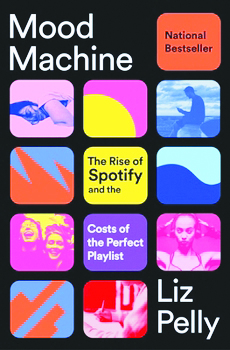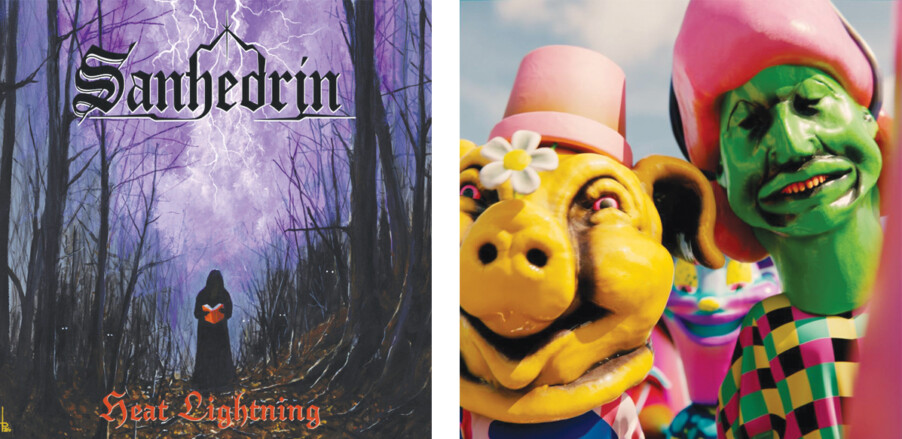A Complete Unknown (R)
A Black teen with a promising future is derailed when he’s sent to a Florida reform school in the 1960s in Nickel Boys, the Oscar Best Picture and Best Adapted Screenplay nominee based on the Colson Whitehead novel.
Elwood (Ethan Herisse) is 17 but already attending college and taking part in civil rights protests. While walking to school one day, he takes a ride from a man who is subsequently pulled over and charged with having stolen a car, which means Elwood is now in trouble for having stolen a car even though he didn’t know the man at all. He’s sent to reform school Nickel Academy, where he’s told working hard will earn early release. This turns out to be extremely untrue; Nickel is a segregated hellscape where the Black kids, some of whom look like they’re barely old enough to be out of preschool, are beaten, tortured and assaulted and used as unpaid labor. Meanwhile, the white kids do some labor but they also play football and are called “mister.” Elwood hangs on to the idea that his loving grandmother, Harriet (Aunjanue Ellis-Taylor), will work with a lawyer to get an appeal and get him out of there. In the meantime he tries, with varying results, to stay clear of some of the more bullying kids and the more sadistic adults. He has help with this when he befriends Turner (Brandon Wilson), a kid with more time at Nickel and nobody waiting for him on the outside. Turner seems to both admire and be deeply wary of Elwood’s belief that justice for them, for the wrongs they suffer, is possible. We also jump to the future, decades later in New York City, and see the burden that these boys, now men, carry with them from what happened to them at Nickel.
Nickel Boys jumps around a bit in time, going back and forth between the 1960s and the adult futures of the characters. It also starts with a presentation of Elwood’s life that feels very much like memories — partly remembered moments, faces, sounds. Scenes are often shot from his point of view or, later, from Turner’s point of view. Which means sometimes we’re feeling what’s happening from the point of view of a terrified, somewhat naive Elwood and sometimes we’re seeing him react. And we’re sometimes looking directly at the horrors of Nickel and sometimes just seeing parts of it — a glimpse of a boy who has been beaten, for example. This approach, along with historical photos and news clips of normal life, help to build the horror of this alternate, medieval world happening in the middle of 1960s America. Helping to build all of this are the great performances all around. Herisse gives us Elwood as he comes to better understand what he’s up against at Nickel and formulate a new plan to deal with it. Ellis-Taylor also helps to place Elwood’s story in the larger context of history and how she hoped better things for him than the circumstance he was forced into. A Available for purchase on VOD.
Bridget Jones: Mad About the Boy (R)
Renée Zellweger’s Bridget Jones is once again a single lady but this time has kids and a welcome amount of maturity in Bridget Jones: Mad About the Boy, the fourth Bridget Jones movie but possibly the truest one to the characters since the first one.
Bridget Jones and Mark Darcy (Colin Firth) really did, finally at last, live happily ever after. They have a lovely house in London and two lovely kids — Billy (Casper Knopf) and Mabel (Mila Jankovic). And their usual suspect circle of friends: longtime buds Shazzer (Sally Phillips), Jude (Shirley Henderson) and Tom (James Callis) as well as work buds Miranda (Sarah Solemani) and Talitha (Josette Simon) and even, as the kids call him, Uncle Daniel (Hugh Grant) — onetime Mark rival Daniel Cleaver. But then four years before the start of this movie, Mark, on a humanitarian mission, is killed and Bridget Darcy is suddenly a widow. After attending a memorial outing for Mark and getting barraged with advice about moving on and jumping back into dating, a frazzled but determined Bridget decides that she will in fact make an effort to live and be a part of the world. She tries out dating again with the much-young Roxster (Leo Woodall). She heads back to work. She actively advocates for her son, reserved like his dad, with his science teacher Mr. Wallaker (Chiwetel Ejiofor), who dings Billy’s grade for adding “heaven” to an illustration of the levels of the atmosphere. Because this is Bridget Jones, she also worries about her appearance, tries some not-entirely-legal lip plumper, reacquaints herself with her shapewear and says yes to way too many things at her kids’ school. She also turns to gynecologist Dr. Rawlings (Emma Thompson) for advice about everything when she probably needs a therapist, which is really just an excuse to slide the droll and awesome Thompson into a few scenes telling Bridget to just carry on.
Not all of the Bridget Jones sequels made sense or felt true to the characters as they were set up in the first movie way back in 2001 but this one really does feel like we’re catching up with those original characters who have grown and changed but also still care for each other. The friend chemistry with Bridget and her three OG buds feels exactly right, as does her relationship with Daniel and the way Hugh Grant has aged Daniel, maturing him in some ways but very much not in others. Bridget and Mark’s relationship, freed of the middle two movies’ need to keep them apart for nonsense reasons, finally feels like the relationship we’d expect them to have — both what they had before Mark died and how Bridget feels now. Bridget is still deeply in love with Mark, and aware that she will always be deeply in love with Mark and always be with him, to some degree, because of their kids. And she is deeply in love with their family, a family that is still actively keeping him a part of it even as they try to move on without him. She comes to terms, over the course of the movie, with the idea that she can love Mark in this way, always be his Mrs. Darcy, and still make new connections, fall in love again without leaving him behind. It’s sweet and grown-up and unexpectedly romantic. B+ Streaming on Peacock.
One of Them Days (R)
Roommates Dreux and Alyssa have just nine hours to make $1,500 in rent or get kicked out of their apartment in One of Them Days, a very middle-of-the-road-but-in-a-good-way action-on-a-clock comedy.
On the morning of the first of the month, landlord Uche (Rizi Timane) tells Dreux (Keke Palmer) and Alyssa (SZA) that he never received their rent money, which Alyssa’s boyfriend Keshawn (Joshua David Neal) was supposed to deliver to Uche, and that if they don’t come up with the money by 6 p.m. he’s evicting them. When attempting to get the money back from Keshawn doesn’t work — he’s “invested” it in a line of T-shirts he plans to sell — they attempt to figure out other ways to get $1,500 including donating way too much blood and getting a payday loan. Meanwhile, at 4 p.m. Dreux has an interview with the corporate office of the diner franchise she works for as a waitress; she’s hoping to secure a manager job that could dramatically change her fortunes. Later in the movie, after the women sell a seemingly abandoned pair of Air Jordans, local tough guy King Lolo (Amin Joseph) informs them that they have until 8 p.m. to get him $5,000 for those sneakers, which were his. Thus does the movie regularly count down until potential catastrophes as Dreux and Alyssa find themselves in increasingly desperate and ridiculous situations.
This is a perfectly fine movie with a few moments of standout comedy and very good friends-for-life chemistry between SZA and Keke Palmer. Their chemistry probably does most of the work of making this movie the fun hang that it is and pulling all the characters and wackiness (Janelle James as a phlebotomist on her first day, Keyla Monterrosa Mejia as an unsympathetic payday loan office) together into something that has moments of real heart. B In theaters and available for rent or purchase.
Dog Man (PG)
“Supa cop” Dog Man captures and recaptures and recaptures again the villainous cat Petey in Dog Man, a brightly-colored animated movie based on the graphic novels by Dav Pilkey.
Dog Man (who doesn’t talk but Peter Hastings provides the Dog Man noises) is born when the head of a very smart police dog is sewn onto the body of a not-smart police man with top-notch martial arts skills after both are injured in an explosion. Now containing the best attributes of both man and dog, Dog Man becomes a hero — making friends with kids, playing piano for old people, generally solving crimes and capturing Petey (voice of Pete Davidson). Capturing Petey a lot because this super smart cat keeps escaping from cat jail. Eventually, Petey’s many escapes get the mayor (voice of Cheri Oteri) so mad that she demands that the police chief (voice of Lil Rel Howery) kick Dog Man off the case. Dog Man is mad he can’t go after Petey but he accepts the assignment to keep an eye on Flippy (voice of Ricky Gervais), an evil fish who is dead and definitely not coming back to life unless someone exposed him to Living Spray at the Living Spray Factory and who would do that, that’s just crazy talk.
Meanwhile, Petey, after having a falling out with his assistant who wants to be paid in money rather than bottle caps or chocolate coins, decides to make his own assistant by cloning himself. He didn’t quite realize, however, that one of the steps of cloning was to wait 18 years until the clone matured into an adult, which is how Petey ends up with Li’l Petey (voice of Lucas Hopkins Calderon), an adorable, adoring kitty version of himself who calls him Papa.
As with the Pilkey books, the movie is humor-rich, with smart visuals that have a hand-drawn askew-ness and clever written elements like spelled-as-spoken words such as “supa” and “OhKay” that all fit with Dog Man’s existence as a comic book by kids George and Harold, the main characters of Captain Underpants. Also like the books, the movie has moments of real heart, such as in Petey’s relationship with Li’l Petey, which is strongly impacted by his own difficult relationship with his father (voice of Stephen Root). This is the kind of story where buildings come alive and turn into lumbering monsters, one of which farts, but also where a character considers the harms of generational trauma and how to break the cycle. But don’t worry, the movie accomplishes its emotional tasks without losing the kid audience! The movie does all its smart emotional stuff under the cover of robots like 80HD and a series of inventions called the “Somethingerother 2000” and pratfalls and dog face licks and just general silliness that don’t slow down the things that keep kids engaged. A In theaters.
Featured Image: Nickel Boys (R)






